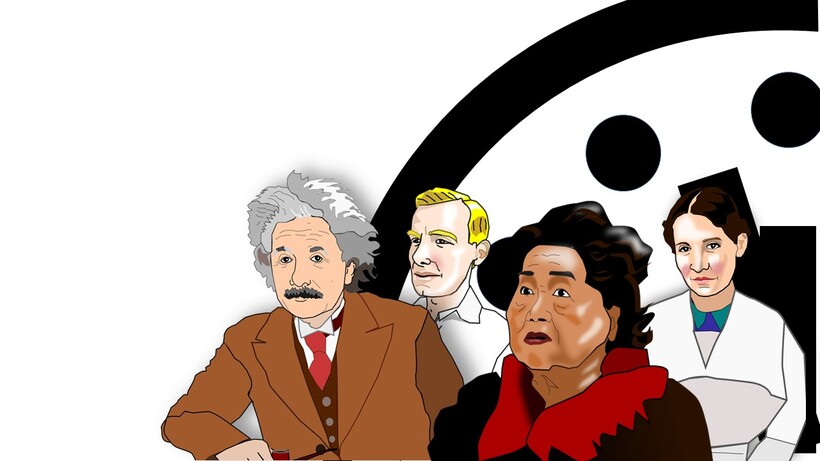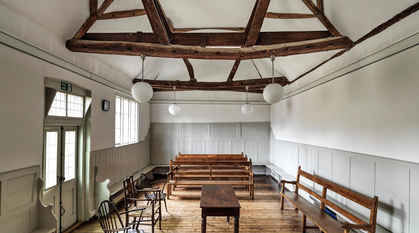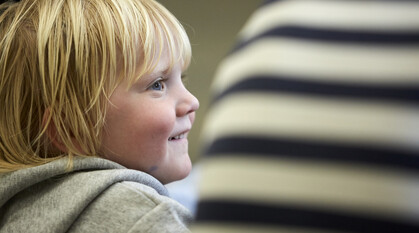Have you seen the time?
As the Doomsday Clock reaches 90 seconds to midnight, Ellis Brooks calls for more nuclear disarmament education.

It's late, but we need to talk. According to the Bulletin of Atomic Scientists, it is 90 seconds to midnight. High time for a national debate about nuclear weapons.
For those unfamiliar with the iconic clock, it is a metaphor created by nuclear scientists in the years following the atomic bombings of Hiroshima and Nagasaki, mindful that civilization-ending weapons were proliferating worldwide. Many of them had a hand in developing the weapons, but then dedicated themselves to restraining their use.
Annually, an assessment is made based on factors like the geopolitical situation, the number, power and distribution of nuclear weapons and the systems which govern their use. The Doomsday Clock has gone backwards as well as forwards at different times. In their analysis, we have never been closer to Doomsday.
Appetite for debate
Most people in Britain also have some fears and scepticism about nuclear weapons. YouGov polling commissioned by the Nuclear Education Trust (NET), shows 56% of UK adults are now worried that a nuclear weapon might be used in a conflict in the next two years. 68% believe the use of nuclear weapons in any circumstances is unacceptable and 79% of UK adults would support nuclear-armed countries like the UK following the example of China and India by committing to a no first strike policy.
The UK is already committed to take steps in good faith towards nuclear disarmament, so the question is not if, but when and how we will disarm. Globally many governments, including close British allies, have already signed the Treaty on the Prohibition of Nuclear Weapons, banning them under international law. UK foreign policy seems to be to pretend this global discussion doesn't have anything to do with us and the UK has increased the number of warheads it has ready to deploy.
Educators tend to agree. Most teachers surveyed by the NET (PDF) think more information, debate and education is needed on nuclear disarmament.
The chain reaction
Scientists are only human – they don't necessarily know where their research is leading, or what should be done with the outcome. In the early 20th century, discovery led to revelation led to breakthrough in a chain reaction.
For a lesson we're developing with Scientists for Global Responsibility, I've been looking at some of the atomic scientists' stories. Henri Becquerel discovered uranium's radioactivity in France. Ernest Rutherford, from Aotearoa New Zealand, discovered the atomic nucleus, and therefore nuclear physics; he said in 1916 that he hoped the power of the atom would not be harnessed "until man is living at peace with its neighbours".
A British scientist called James Chadwick discovered the neutron. Leo Szilard, a Hungarian, theorised neutrons could be used to split uranium atoms and trigger a chain reaction. There's the famous letter, signed and later lamented by Einstein, lobbying President Roosevelt to beat Nazi Germany to the bomb; there's Joseph Rotblat, the only scientist we know to have resigned from the Manhattan Project. After the bomb was tested and ready, there were many scientists who argued fruitlessly for the US not to target Japanese civilians.
A clear thinking scientist
Then there's Lise Meitner. The first female physics professor in Germany, Meitner designed the experiment which proved the uranium atom could be artificially split – the fission at the heart of the atomic bomb. Meitner would be nominated for a Nobel Prize 48 times in her career, but never won.
Like Einstein, Szilard, Rotblat and many other European scientists, Meitner fled the Nazis because she was of Jewish descent. She was invited to join the British mission to the Manhattan Project, but she refused, saying "I will have nothing to do with a bomb". Amid the murky morals of a global war, that clarity is striking.
Of course, in war, scientists aren't the decision-makers. Six years after Meitner's breakthrough, a 13-year-old schoolgirl was volunteering at her local military headquarters. The sun had already been up three hours when she saw a brilliant bluish white flash at the window. It was 8:15, 6 August, 1945, Hiroshima.
Setsuko Thurlow found herself lifted in the air then pinned in rubble. When she was dug out, she saw the fire that burned her classmates was still ablaze. She saw streams of people, "bleeding ghostly figures, naked and tattered, parts of their body missing". 8 members of Setsuko's family, 351 of her classmates and teachers, and at least 70,000 others died as a result. That day must have felt like her own midnight, but Setsuko survived the bomb and radiation poisoning. She is an hibakusha, an atomic survivor. She would spend a lifetime sharing her story so there would be no more hibakusha.
Listening to the warnings
It was after the war that more scientists began to speak out to educate the public about the destructive power of nuclear weapons. The pamphlet and succeeding movie, One World or None (1946), powerfully warns the world to agree an international system for controlling nuclear weapons.
Of course, many scientists and engineers continued to develop, refine more powerful weapons of mass destruction. Some dedicated themselves to research on how radiation could have medical applications, some to nuclear power. Some, like Japan's Hideki Yukawa, documented the awful humanitarian impact of nuclear weapons, acting as allies to victims of radiation poisoning from the many nuclear tests conducted.
Meanwhile, Setsuko Thurlow was there to speak at the UN in 2017 when 122 nations voted in favour of the Treaty on the Prohibition of Nuclear Weapons.
And some scientists, including Rotblat, Einstein, Yukawa and many others, campaigned for disarmament. They formed the Pugwash Conferences on Science and World Affairs which, with Rotblat himself, jointly won the Nobel Peace Prize in 1995 "for their efforts to diminish the part played by nuclear arms in international politics and, in the longer run, to eliminate such arms".
Taking responsibility
Though they felt the weight of their knowledge, I don't think scientists are saying they should take all the decisions about nuclear weapons. They were saying we all need to take decisions about them, and to take responsibility for understanding them well enough to do so.
So, not because the scientists said so, but because it is a task that falls to us, we need to escalate the urgency of nuclear disarmament education, debate and action.


